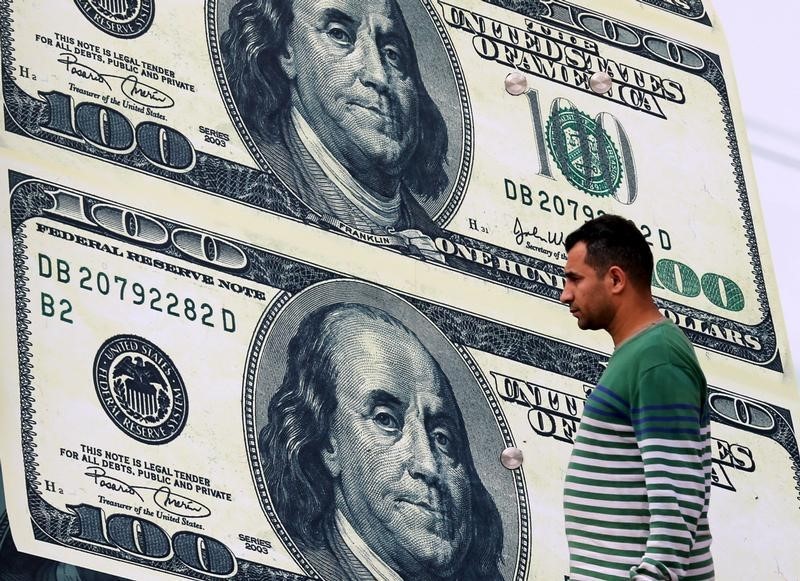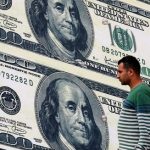
At 05:40 ET (10:40 GMT), the Dollar Index, which tracks the greenback against a basket of six other currencies, traded largely unchanged at 104.755, just below the previous session’s 105.07 top, its highest level since the middle of November last year.
The greenback received a boost Monday after data showed the first expansion in U.S. manufacturing since September 2022.
Further signs of U.S. economic strength has resulted in traders reining in expectations of early interest rate cuts by the Federal Reserve, supporting the dollar.
The CME’s FedWatch tool now factors in 61.3% odds of a Fed rate cut in June, down from about 70.1% probability a week ago.
There is more economic data to digest Tuesday, including job openings and durable orders, both for February, ahead of Friday’s widely-watched payrolls report for March.
“Looking ahead, this week features a myriad of Fed speakers. Given the direction of travel of the U.S. data recently, it seems hard to expect any renewed dovishness on their side,“ said analysts at ING, in a note.
“Markets expect a slightly lower JOLTS job opening figure today,” ING added, “we see this data as a potential market mover which, if soft, could reverse some of the dollar gains seen late last week.”
In Europe, EUR/USD fell 0.1% to 1.0738, dropping after eurozone manufacturing activity took a further turn for the worse in March, contracting at a steeper pace than in February.
HCOB’s final eurozone manufacturing Purchasing Managers’ Index, compiled by S&P Global, dipped to 46.1 in March from February’s 46.5, beating a preliminary estimate of 45.7, but staying below the 50 mark denoting growth in activity for a 21st month.
“Two-year EUR:USD swap rate differentials are now at 145bp in favor of the dollar. These are the most supportive rate conditions for the dollar since December 2022,” ING said. “No wonder EUR/USD is comfortably trading under 1.0800. The 1.0695/1.0700 lows seen in mid-February are now an obvious short-term target.”
GBP/USD rose 0.2% to 1.2569, bouncing after recent losses after British manufacturers reported their first overall growth in activity in 20 months in March, suggesting last year’s shallow recession has ended.
The S&P Global/CIPS UK Manufacturing Purchasing Managers’ Index rose to 50.3, higher than a preliminary March reading of 49.9 and up from February’s 47.5. The last time this index was above the 50 threshold for growth was in July 2022.
USD/JPY traded 0.1% higher at 151.68, just below the 151.80 level seen earlier in the session, the weakest level since it reached a 34-year trough of 151.975 last week.
Finance Minister Shunichi Suzuki reiterated earlier Tuesday that he wouldn’t rule out any options to respond to disorderly currency moves.
Japanese authorities entered the currency market three times in 2022, selling the dollar to buy yen, first in September and again in October as the yen slid towards 152 to the dollar.
USD/CNY rose 0.1% to 7.2358, with the yuan falling to a 4-1/2-month low against the dollar, offsetting selling of the U.S. currency by state-owned banks.
To read the full article, Click Here

